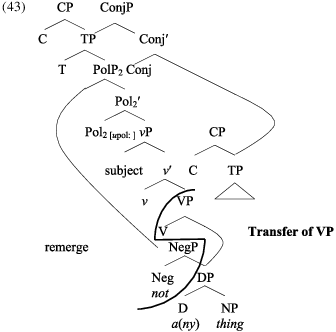- Clear Explanation About English Quantifiers Pdf File
- Clear Explanation About English Quantifiers Pdf Format
- Clear Explanation About English Quantifiers Pdf Free
- Clear Explanation About English Quantifiers Pdf Download
A clear preference for one of the two readings) and English-speaking adults accept both collective and distributive readings when presented with the quantifier all (Brooks & Braine, 1996). Nonetheless, both Hebrew-speaking and English-speaking adults prefer to assign the collective reading to the. QUANTIFIERS QU 1 Fill in: much, many, lots of, a lot of, little, most, a little, little, a few, few. It seems we have had a lot of, many, lots of assignments in English this year. How much do we have to read this week? Most, Many, A lot of Americans don’t like George Bush 4. There aren’t very many books in the library. 1.2 Quantifiers. Recall that a formula is a statement whose truth value may depend on the values of some variables. For example, is true for x = 4 and false for x = 6. Compare this with the statement. Which is definitely true. The phrase 'for every x ' (sometimes 'for all x ') is called a universal quantifier and is denoted by ∀x. The results of Experiment 1 revealed that, despite the relatively small sample sizes in this experiment, speakers of all four languages follow consistently similar patterns of evaluating the quantifiers with the meaning of few, half, most, and almost all. An important exception in this picture concerns the English quantifier some.
Recall that a formula is a statement whose truth valuemay depend on the values of some variables. For example,
'$xle 5 land x> 3$'
is true for $x= 4$ and false for$x= 6$. Compare this with the statement
'For every $x$, $xle 5 land x>3$,'
which is definitely false and the statement
'There exists an $x$ such that $xle 5 land x>3$,'
which is definitely true. The phrase 'for every $x$'(sometimes 'for all $x$') is calleda universal quantifier and is denoted by $forall x$. The phrase 'thereexists an $x$ such that' is called an existentialquantifier and is denotedby $exists x$. A formula that contains variables is not simplytrue or false unless each of these variables is bound by a quantifier. If a variable is notbound the truth of the formula is contingent on the value assigned tothe variablefrom the universe of discourse.
We were careful in section 1.1 to definethe truth values of compound statements precisely. We do the same for$forall x,P(x)$ and $exists x,P(x)$, though the intended meaningsof these are clear.
The Universal Quantifier
A sentence $forall x,P(x)$ is true if and only if $P(x)$ is true nomatter what value (from the universe of discourse) is substituted for $x$.

Example 1.2.1
$bullet$ $forall x (x^2ge 0)$,i.e., 'the square of any number is not negative.'
$bullet$ $forall x,forall y (x+y=y+x)$, i.e., the commutative law of addition.
$bullet$ $forall x,forall y,forall z ((x+y)+z=x+(y+z))$,i.e., the associative law of addition.
$square$
The 'all' form.The universal quantifier is frequently encountered in the following context:$$forall x (P(x)implies Q(x)),$$which may be read, 'All $x$ satisfying $P(x)$ also satisfy$Q(x)$.' Parentheses are crucial here; be sure you understand thedifference between the 'all' form and $forall x,P(x)impliesforall x,Q(x)$ and $(forall x,P(x))implies Q(x)$.
The latter formula might also be written as $forall x,P(x)impliesQ(x)$, which is to say that the universal quantifier has higherprecedence than the conditional; to avoid misunderstanding,it is best to include the parentheses. The meaning of this formulamight not be clear at first. The $x$ in $P(x)$ is bound by theuniversal quantifier, but the $x$ in $Q(x)$ is not. The formula$(forall x,P(x))implies Q(x)$ has the same meaning as $(forallx,P(x))implies Q(y)$, and its truth depends on the value assignedto the variable in $Q(cdot)$.
Example 1.2.2
$bullet$ $forall x$ ($x$ is a square $implies$ $x$ is a rectangle),i.e., 'all squares are rectangles.'
$bullet$ $forall x$ ($x$ lives in Walla Walla $implies$ $x$ lives in Washington), i.e., 'every person who lives in Walla Walla lives in Washington.'
$square$
This construction sometimes is used to express amathematical sentence of the form 'if this, then that,' with an'understood' quantifier.
Example 1.2.3
$bullet$ If we say, 'if $x$ is negative, so is its cube,' weusually mean 'every negative $x$ has a negative cube.' This shouldbe written symbolically as$forall x ((x< 0)implies (x^3< 0))$.
$bullet$ 'If two numbers have the same square, then they have the same absolute value' should be written as$forall x,forall y ((x^2=y^2)implies(vert xvert = vert yvert))$.
$bullet$ 'If $x=y$, then $x+z=y+z$' should be written as $forall x,forally,forall z ((x=y)implies (x+z=y+z))$.
$square$
If $S$ is a set, the sentence 'every $x$ in $S$ satisfies $P(x)$' iswritten formally as$$forall x ((xin S)implies P(x))$$ For clarity and brevity, this is usually written $forall x,{in},S,(P(x))$. To understand and manipulate the formula $forallx,{in},S, (P(x))$ properly, you will sometimes need to'unabbreviate' it, rewriting it as $forall x ((xin S)impliesP(x))$.
Example 1.2.4
$bullet$ $forall xin [0,1] (sqrt xge x)$stands for $forall x (xin [0,1]implies sqrt xge x).$

$bullet$ $forall x< 0 (vert xvert =-x)$ stands for $forall x (x< 0implies vert xvert = -x).$
$square$
The Existential Quantifier
A sentence $exists x,P(x)$ is true if and only if there is at leastone value of $x$ (from the universe of discourse) that makes $P(x)$ true.
Example 1.2.5
$bullet$ $exists x (x ge x^2)$is true since $x=0$ is a solution. There are many others.
$bullet$ $exists x,exists y (x^2+y^2=2xy)$ is true since$x=y=1$ is one of many solutions.
$square$
The 'some' form. The existentialquantifier is frequently encountered in the following context: $$exists x(P(x)land Q(x)),$$ which may be read, 'Some $x$ satisfying $P(x)$ alsosatisfies $Q(x)$.'
Example 1.2.6
Clear Explanation About English Quantifiers Pdf File
$bullet$ $exists x, hbox{($x$ is a professor $land$ $x$ is a republican)}$, i.e., 'some professor is a republican.'
$bullet$ $exists x, hbox{($x$ is a prime number $land$ $x$ is even)}$, i.e.,'some prime number is even.'
$square$
It may at first seem that 'Some $x$ satisfying $P(x)$satisfies $Q(x)$' should be translated as$$exists x (P(x)implies Q(x)),$$like the universal quantifier. To see why this does not work,suppose $P(x)=hbox{'$x$ is an apple'}$ and $Q(x)=hbox{'$x$ is anorange.'}$ The sentence 'some apples are oranges' is certainlyfalse, but$$exists x (P(x)implies Q(x))$$is true. To see this suppose $x_0$ is some particular orange. Then$P(x_0)implies Q(x_0)$ evaluates to $hbox{F}implies hbox{T}$,which is T, and the existential quantifier is satisfied.
We use abbreviations of the 'some' form much like those for the'all' form.
Example 1.2.7
$bullet$ $exists x< 0 (x^2=1)$ stands for $exists x ((x< 0) land (x^2=1))$
$bullet$ $ exists xin [0,1] (2x^2+x =1)$ stands for $ exists x ((xin [0,1])land (2x^2+x=1))$$square$
If $forall$ corresponds to 'all' and $exists$ corresponds to 'some'do we need a third quantifier to correspond to 'none'? As the following shows, this is not necessary:
Example 1.2.8

$bullet$ 'No democrats are republicans,' can be written $forall x$ ($x$ is a democrat $implies$ $x$ is not a republican).
$bullet$ 'No triangles are rectangles,' can be written $forall x$ ($x$ is a triangle $implies$ $x$ is not a rectangle).

$square$
In general, the statement 'no $x$ satisfying $P(x)$ satisfies $Q(x)$' can be written $$forall x (P(x)implies lnot Q(x)).$$(You may wonder why we do not use $lnot exists x,(P(x)land Q(x))$. In fact, we could—it is equivalent to $forall x (P(x)implies lnot Q(x))$.)
Exercises 1.2
In these problems, assume the universe of discourse is thereal numbers.
Ex 1.2.1Express the following as formulas involving quantifiers:
a) Any number raised to the fourth power is non-negative.
b) Some number raised to the third power is negative.
c) The sine of an angle is always between $+1$ and $-1$.
d) The secant of an angle is never strictly between $+1$ and $-1$.
Ex 1.2.2Suppose $X$ and $Y$ are sets. Express the following as formulas involving quantifiers.
a) Every element of $X$ is an element of $Y$.
b) Some element of $X$ is an element of $Y$.
c) Some element of $X$ is not an element of $Y$.
d) No element of $X$ is an element of $Y$.
Ex 1.2.3Recall (from calculus) that a function $f$ is increasing if$$ forall a forall b (a< bimplies f(a)< f(b))$$Express the following definitions as formulas involving quantifiers:
a) $f$ is decreasing.
b) $f$ is constant.
c) $f$ has a zero.
Ex 1.2.4Express the following laws symbolically:
a) the commutative law of multiplication
b) the associative law of multiplication
c) the distributive law
Ex 1.2.5Are the following sentences true or false?
Clear Explanation About English Quantifiers Pdf Format
a) $forall x forall y (x< yimplies x^2< y^2)$
b) $forall x forall y forall zne 0 (xz=yzimplies x=y)$
c) $exists x< 0 exists y< 0 (x^2+xy+y^2=3)$
d) $exists x exists y exists z (x^2+y^2+z^2=2xy-2+2z)$
Clear Explanation About English Quantifiers Pdf Free
Ex 1.2.6Suppose $P(x)$ and $Q(y)$ are formulas.
Clear Explanation About English Quantifiers Pdf Download
a) Is $forall x forall y (P(x)implies Q(y))$equivalent to $forall x(P(x)) implies forall y(Q(y))$?
b) Is $exists x exists y (P(x)land Q(y))$equivalent to $exists x(P(x)) land exists y(Q(y))$?